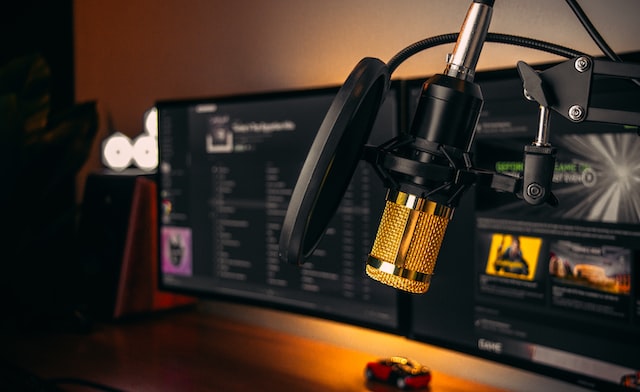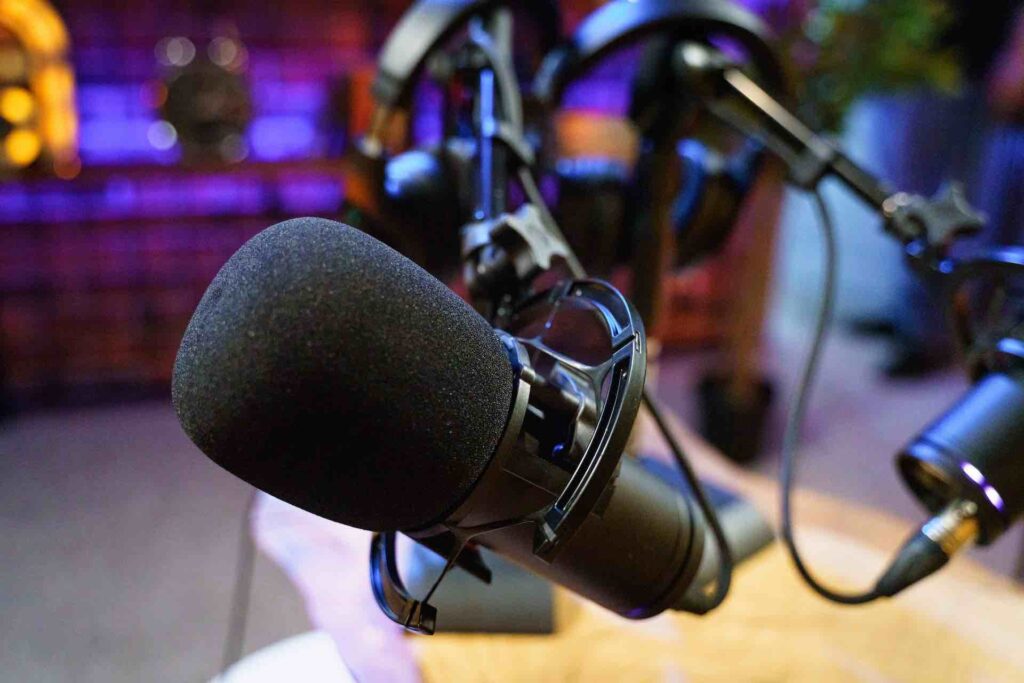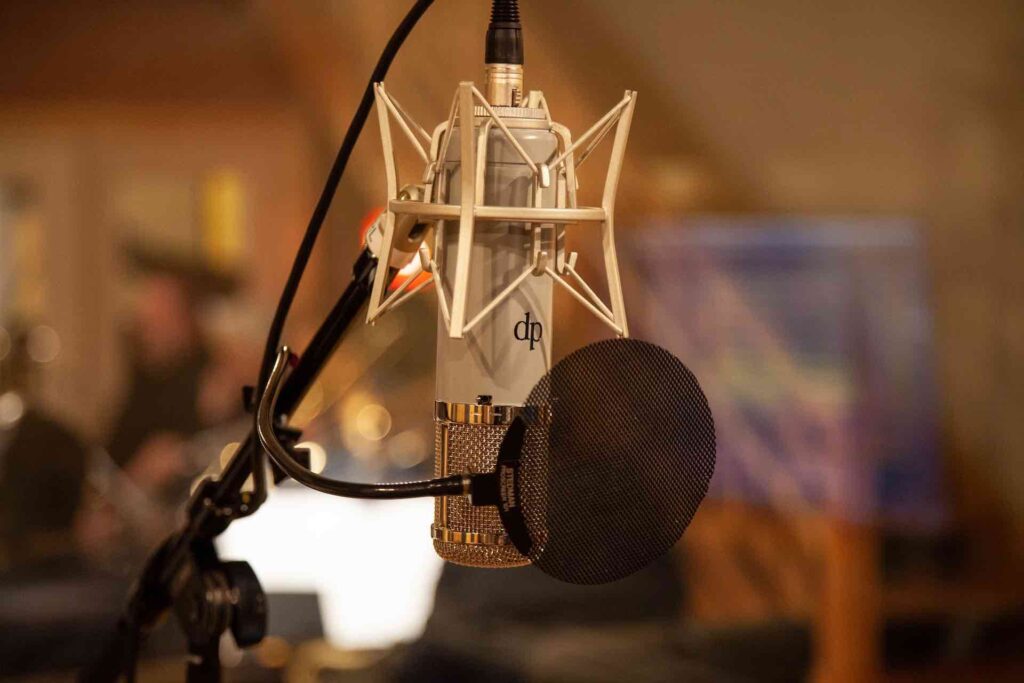How far should a pop filter be from a mic for the best results?
Here’s a quick answer:
How Far Should a Pop Filter Be From a Mic?
We recommend placing your pop filter 4-5 inches away from your mic for the best results.
A quick way to measure this distance is by balling your hand into a fist. Place your pinky finger on the mic and position the pop filter in front of your thumb.
Pop Filter Mic Placement
The main reason for placing a pop filter 4 inches away is to prevent your microphones from picking up any unwanted popping sounds.
Naturally, our voices release blasts of air, or “plosives,” when we pronounce “p” and “b” sounds.
Plosive can ruin your recordings and even damage your microphone over time.
You can eliminate this problem by placing a pop filter between your mouth and microphone.
What is a Pop Filter?

A pop filter prevents your mic from picking up popping sounds from your voice.
It’s typically a circular frame with a piece of cloth or other porous material stretched over it.
It uses a mesh screen to allow air to pass through while diffusing the sound waves that cause popping noises.
Why Use a Pop Filter?
Using a microphone without a pop filter will add distortion to your recordings whenever you pronounce “p” and “b”.
Pronouncing these sounds releases air from your mouth that forcibly hits your microphone’s diaphragm.
Luckily, cloth pop filters diffuse these fast-moving air particles, leading to a more even air distribution.
How Much Difference Does a Pop Filter Make?
A pop filter makes a huge difference in the quality of your recordings.
By reducing pops and clicks, a pop filter helps produce clean, professional recordings.
They can also reduce sibilance (the hissing noise your mouth creates when you say “s” and “t”).
Plus, they protect your mic from getting gunked up with saliva!
Pop Filters vs Windscreens

Pop filters and windscreens often get confused.
You can use them both to eliminate “pops”, but a windscreen is a foam glove that you place over your microphone.
The windscreen can also eliminate plosives. But they can slightly change the tone of your recording by reducing the presence of high-frequency sounds.
A pop filter doesn’t alter the tone of your audio and is slightly more effective against plosives.
Broadcasters/podcasters and streamers use windscreens on dynamic mics in broadcast settings.
Meanwhile, pop filters are the go-to for condenser mics and vocal production.
How to Make your Own Pop Filter
If you don’t have a pop filter, you can easily make your own with a few inexpensive supplies.
All you need is a piece of cloth, some wire (I suggest a metal clothes hanger), and a rubber band.
First, cut a circle out of the cloth that is big enough to cover the microphone.
Then, shape the wire into a hoop and place the cloth around it.
Finally, use the rubber band to secure the cloth around the bottom of the wire.
And there you have it!
Your homemade pop filter will work just as well as a store-bought one.
However, a professional pop filter has a mic stand clamp making it more stable than a homemade version.
Metal Pop Filters vs Nylon Pop Filters

A metal microphone pop filter is better than a cloth one in terms of durability and performance.
Metal filters reflect air away from your mic while a nylon pop filter diffuses it. Both methods ensure that air from your mouth doesn’t hit your mic as aggressively.
A metal filter will give you a slightly clearer sound because it reflects plosives rather than diffusing them.
It’ll also more durable than a clothe pop filter.
Frequently Asked Questions
How Do You Angle a Pop Filter?
The best way to angle a pop filter is to align its center with the center of your microphone capsule.
Should the Pop Filter Touch the Mic?
No, your pop filter shouldn’t touch your mic.
If your filter is that close, it can cause more problems than it solves.
Blasts of air will still be able to hit your mic directly and ruin your recordings.
To avoid this problem, make there’s at least 4-5 inches of space between your pop filter and your mic.
Can I Use a Windscreen as a Pop Filter?
Yes, you can use a windscreen as a pop filter.
Windscreens can also reduce the amount of popping and other unwanted sounds in your recordings.
However, for vocal recording, we recommend using a pop filter.
A windscreen slightly reduces high frequencies, altering your audio’s tone.
If reducing high frequencies is your goal, then consider incorporating a windscreen.
However, a pop filter will help produce the most accurate representation of your performances.
Do You Need Both a Pop Filter and Foam Cover?
The short answer is no; you don’t need both a pop filter and a foam cover.
Each serves a different purpose and can be beneficial in certain situations.
You can use a pop filter to eliminate plosives – those little “p” and “b” sounds that can create popping noises when you speak into a mic.
On the other hand, a foam cover reduces ambient noise and helps create a more focused sound.
So, which one should you use?
It really depends on your needs.
If you’re simply looking to reduce plosives, then a pop filter will do the trick. But if you’re trying to record in a noisy environment or want to ensure your audio is as clear and focused as possible, then a foam cover is the way to go.
Summary
A good rule of thumb is to place a pop filter about 4-5 inches away from your microphone.
This distance will help to minimize any popping or hissing sounds without adversely affecting your recording quality.








